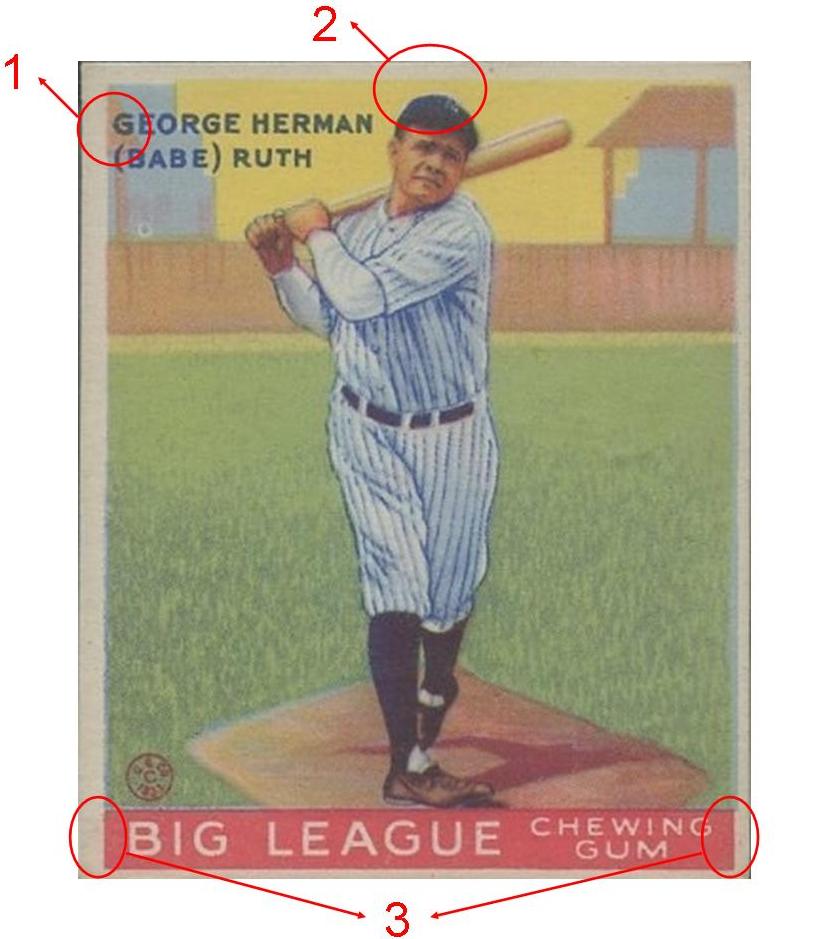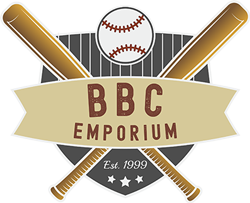The 1933 Goudey Babe Ruth #144 is a highly counterfeited card. Many fakes are in circulation, some are easy to spot, while others can be very difficult to distinguish between an authentic example. This guide will help point out the characteristics of an authentic example and show some of the more common counterfeits. One common characteristics that many of the counterfeits share is they have a glossy front, an authentic Goudey card will not have a glossy front. Many of these counterfeits are very good, and can be difficult to distinguish from an authentic card. When it comes to buying a card of the Babe, buy a graded example from a reputable dealer.

1933 Goudey Babe Ruth Front

1933 Goudey Babe Ruth Back
- There will be a small gap between the “G” and the border
- There will be a small gap between the top of Ruth’s hat and the border.
- The red border will not perfectly align with the left and right borders. One side will be slightly offset.
- The back of the card will show some red ink that has bled through. Some believe the ink has bled through from the front of the card, while others believe this is transferred from the stacking of wet sheets during production.
- The text on the back of the card will be in solid green. Under magnification, the green text should not be made up of several dots or pixels.
Examples of 1933 Goudey Babe Ruth #144 Counterfeits


- There is no gap between Ruth’s hat and top border
- There is no gap between the “G” and the left border
- The red title block is perfectly aligned with the border
- The back does not have the red ink bleeding through
- Detecting Counterfeit Cards in PSA Holders
As the hobby moves into the future, very seldom are high profile cards sold ungraded, but rather are sold entombed in a tamper-proof holder from a third party grader (TPG). The most well known TPGs are PSA, Beckett, and SGC. PSA is the most well known TGP and has a majority of the market share. In the past, one could feel relatively safe when buying a graded card that what they were buying was authentic and not altered. However, when it comes to high dollar cards, that is no longer the case. Counterfeiters have figured out how to compromise the holders by opening them, swapping out the cards or flips and resealing the holders again. The holders that are most commonly targeted are from PSA. In the past years, PSA has made changes to their holders to prevent or minimize the fraud, but the older holders are still at risk. I have written an extensive article to better understand this and steps you can take to prevent being a victim of fraud. Here is a link to the article.
